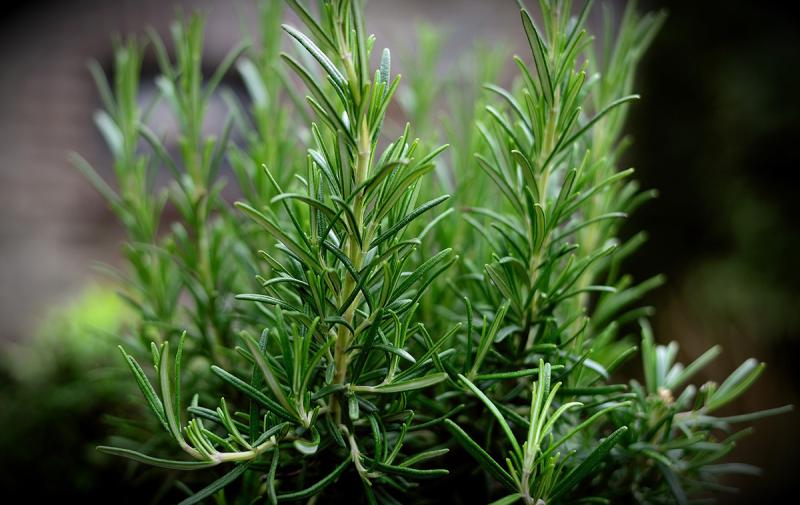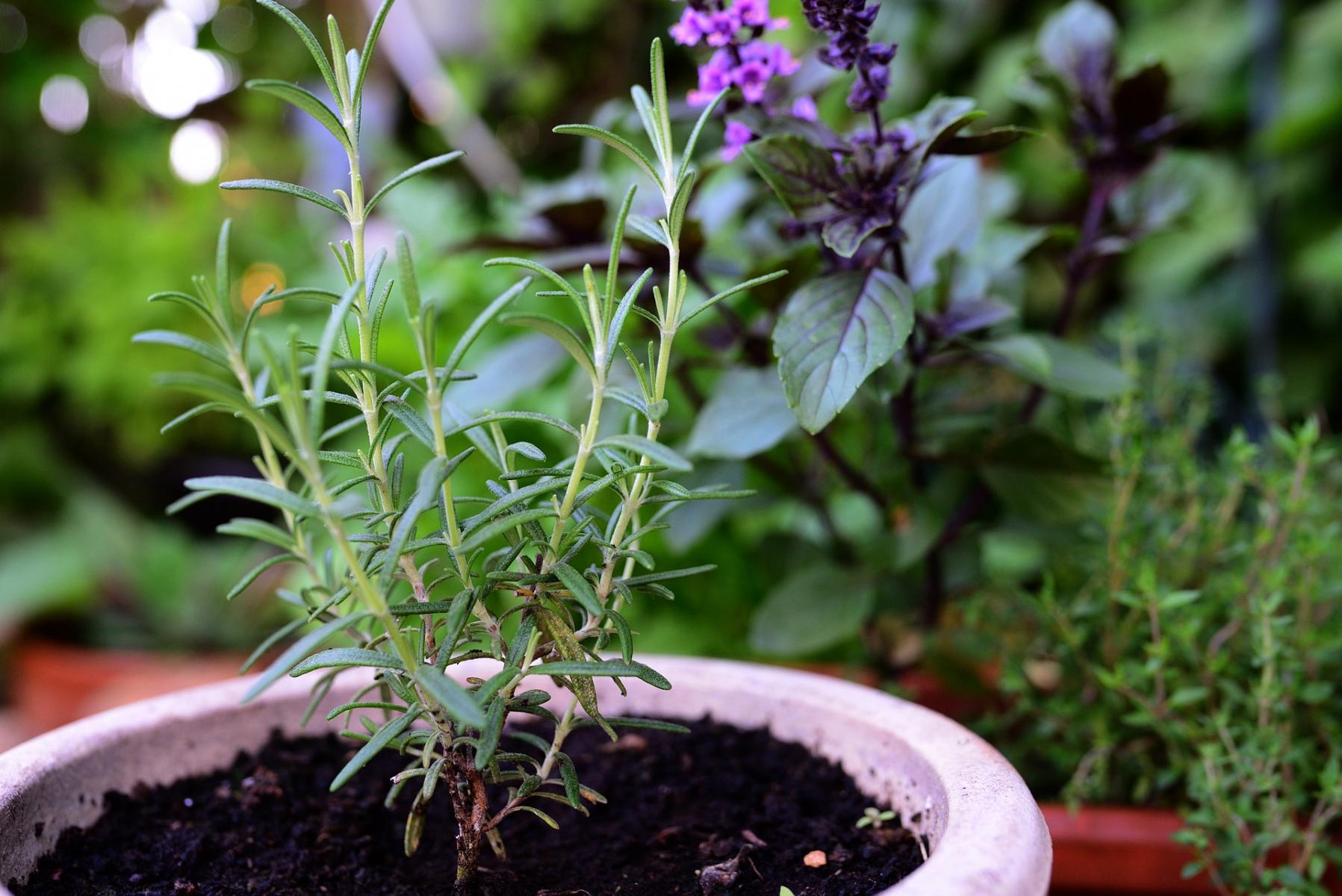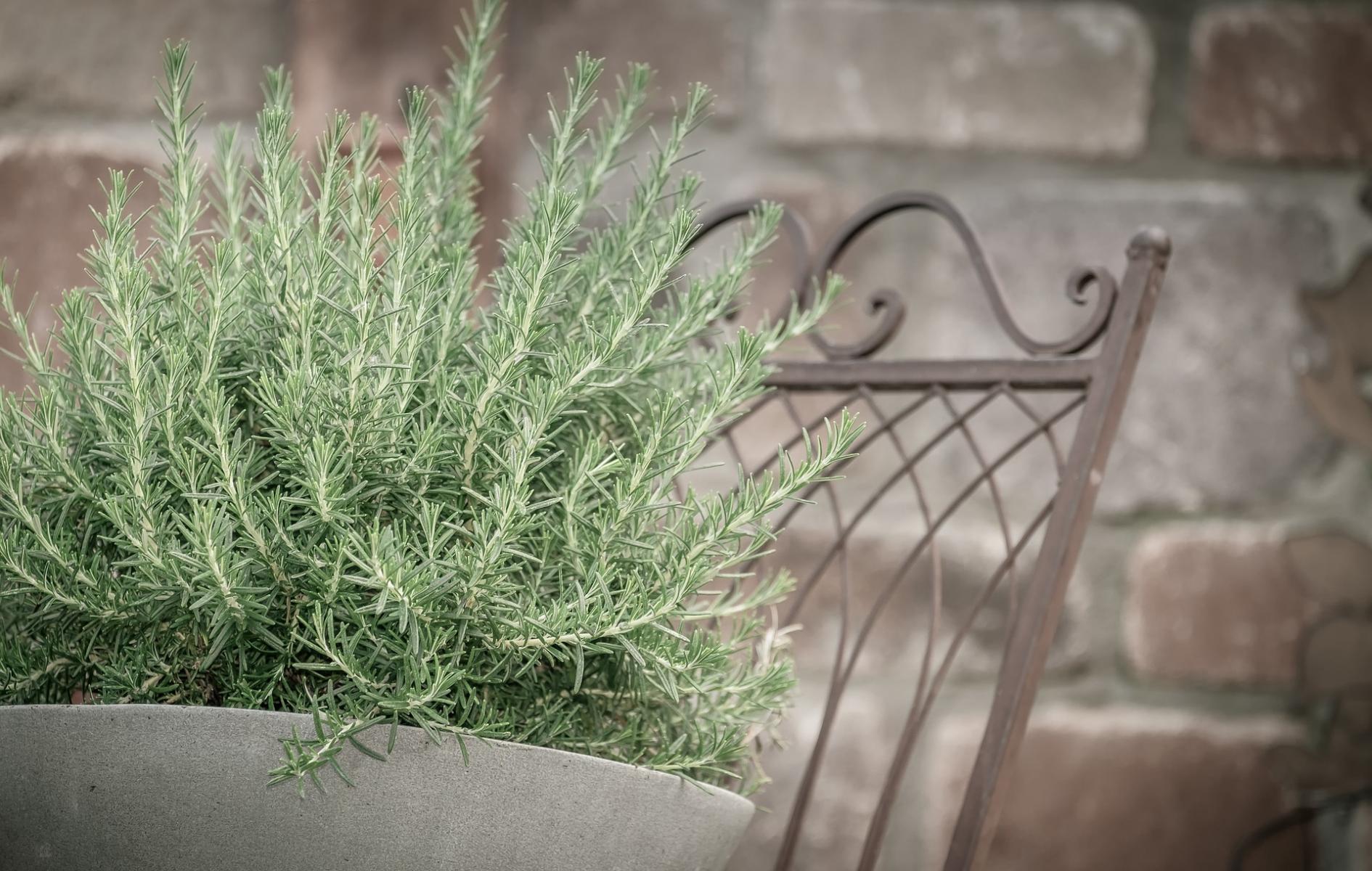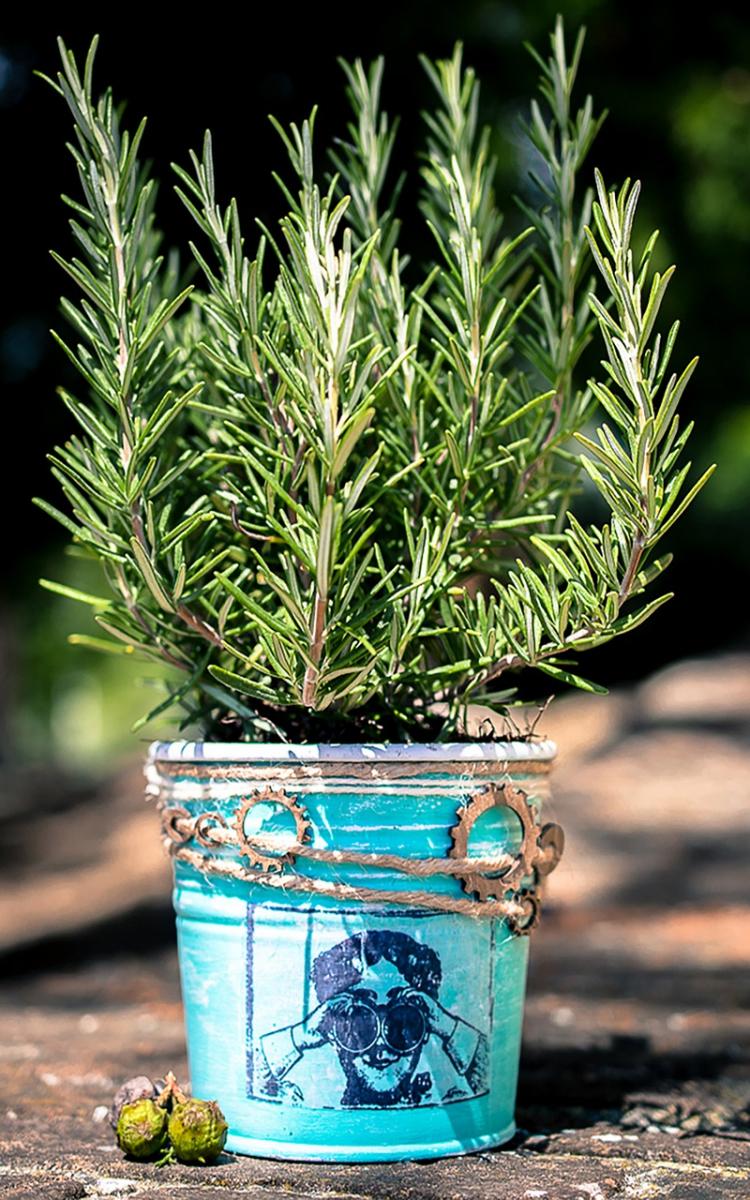
Rosemary, Rosmarinus officinalis, although not as popular as poinsettias, is common during the holidays. It combines ornamental beauty and the usefulness of a culinary herb in one attractive plant. It is often sold as small pine tree-shaped tabletop plants or in variously shaped topiary forms. It’s not surprising they are so popular, given their beauty and fragrance. Their fresh piney fragrance is refreshing, especially during the dreary winter months.
There are many legends surrounding rosemary, as would be expected from a plant grown for over 5000 years. (Dried rosemary sprigs have been found in Egyptian tombs dating to 3000 B.C.) Many know the saying, “Rosemary for remembrance.” It was thought the foliage’s scent improved memory and so sprigs were woven into braided garlands by ancient Greek students to improve their memory. It also has a history as a love charm, has been used to signify stability and fidelity, and to repel evil spirits.
 Growing Rosemary in the Garden
Growing Rosemary in the Garden
Rosemary leaves are needle-like, similar to a spruce tree, dark green or gray-green in color. Plants have white, pink or light blue flowers. It grows as a woody evergreen shrub, and in its native Mediterranean region, plants can easily grow to a height of 4-6 feet. Plants are winter hardy in Zones 7-10.
In Nebraska, which encompasses Zones 4b, 5a and 5b*, plants are considered tender perennial herbs and usually grown as either an annual herb in the vegetable garden or as a houseplant. Containerized plants can be taken outdoors in summer and brought inside in fall to grow as a houseplant in winter.
Sometimes in eastern Nebraska, plants located in very protected locations or those given extra winter protection can survive outside from year to year. But this doesn’t just happen, it requires extra work and experienced care.
In the summer garden, rosemary prefers a sunny, sheltered location with very well-drained, dry, and almost gravelly, slightly acidic soil.
‘Arp’ is a common cultivar, originated by Madalene Hill from Arp, Texas, and is one of the most winter hardy types (Zone 6). It has light blue flowers on upright 3’ tall plants.
 Winter Protection
Winter Protection
The biggest threat to rosemary’s winter survival is wet, poorly drained winter soil, leading to root rot. Make sure the chosen garden site has soil that continues to be well-drained in winter.
Plants can also be killed by temperatures below their cold tolerance, so located your rosemary plant close to the house on the south or west side. In these locations, plants benefit from retained and reflected winter warmth from your home's foundation. Their roots are more cold-hardy then the top-growth, but they still need protection. In fall, mulch roots with 5-6 inches of wood chips to provide additional protection.
Finally, make sure the branches and foliage are protected from desiccation by strong winter winds. This can be done through the use of rose cones, burlap wraps, chicken wire cyclinders filled with leaves or straw, or commercial products like the Pop-up Plant Protector or Shrub Jacket. Protection should be installed after the first hard frost and not removed in spring until the danger of frost is past.
 Rosemary as a Houseplant
Rosemary as a Houseplant
Provide indoor plants with a bright, sunny window during winter. Normal indoor temperatures are fine during winter, but rosemary would be happier in cooler conditions 55-50°F if that is available. Water as needed to keep plants evenly moist to slightly dry.
Harvesting
Rosemary can be used in cooking either fresh or dried. For fresh use, harvest cuttings from the tender new growth. Strip leaves from the stems and chop or mince as directed by your recipe.
Long stems or whole plants can be harvested for drying. Harvest whole plants by digging or pulling them from the ground and shaking off the loose soil. Or collect individual stems into bunches and tie them together with string or rubber bands.
Hang the plants or bunches upside-down in a warm, well-ventilated location to dry. Once dried, strip leaves from the stems and store them in tightly covered jars in a dark, cool location. If moisture condenses inside the jars, more drying is needed.
*Note – Average annual minimum temperatures for Zones 4b, 5a and 5b are the following.
- 4b: -34.4 to -31.7°F
- 5a: -28.9 to -26.1°F
- 5b: -26-1 to -23.3°F
Images from Pixabay.com.